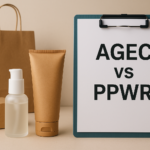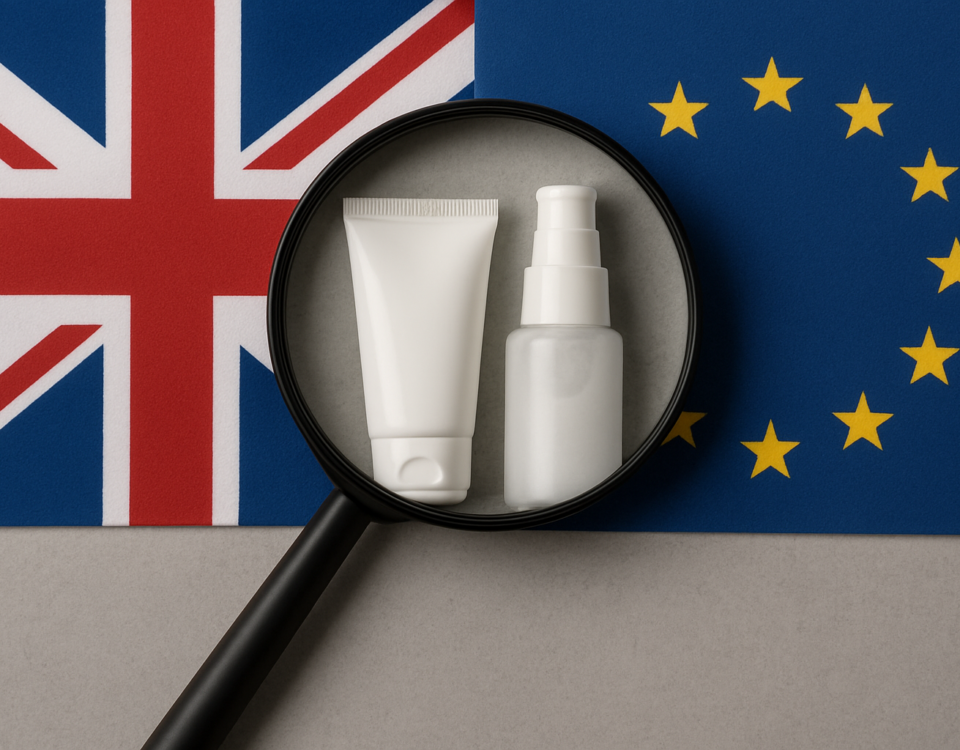
Cosmetics and Brexit: what remains of regulatory convergence with the EU?
28 July 2025
What actions should we take when national and European regulations overlap?
1 December 2025REACH – in brief ?
REACH = Registration, Evaluation, Authorisation and Restriction of CHemicals.
This European regulation (EC No. 1907/2006) governs the manufacture, import, and use of chemical substances across all sectors of activity.
It aims to:
- ensure the safety of chemical substances placed on the European market,
- assess their risks to human health and the environment,
- impose restrictions or authorisations for specific substances.
All chemical products marketed within the EU are subject to it — including those used in cosmetic products.
The five main impacts of REACH on cosmetics
Although the Cosmetics Regulation (EC No.1223/2009) remains the primary reference in the sector, REACH intervenes upstream at several key stages.
1) Registration of substances
- Manufacturers or importers of substances (including those intended for cosmetic use) must register them with the ECHA (European Chemicals Agency) when the quantity reaches ≥ 1 tonne/year, unless exemptions apply.
- Cosmetic product manufacturers do not manage registration themselves, but must ensure that their suppliers only use substances that are registered and compliant.
- When manufacturing is outsourced to an organisation outside the EU, the entity placing the product on the market must ensure that the substances used comply with this regulation (and are registered if necessary).
If a substance is not registered under or does not comply with REACH, it cannot legally be manufactured, imported, or used in the European Union.
2) Restrictions (Annex XVII)
- The use of certain substances is restricted or prohibited under specific conditions: D4/D5/D6, microplastics, certain PFAS, etc.
- When a substance is listed in Annex XVII, it may not be used beyond the conditions defined — unless its use is already covered by the Cosmetics Regulation (through Annexes II to VI).
3) Substances of concern (SVHCs & authorisation)
SVHCs (Substances of Very High Concern) include, in particular:
- substances of concern in terms of health: CMRs, endocrine disruptors, etc.
- and others of concern for the environment: PBT (Persistent, Bioaccumulative and Toxic) and vPvB (very Persistent and very Bioaccumulative).
As such, they may be placed on the Candidate List of SVHCs. This inclusion does not imply a ban but rather a monitoring obligation. Some of them are subsequently moved to Annex XIV and require authorisation for release on the market.
→ If inclusion is a result of a health concern, the cosmetic products are exempt from authorisation (Article 56(5)), as the Cosmetics Regulation already manages these risks.
→ If the concern is environmental, the exemption does not apply: use in cosmetics becomes prohibited without authorisation.
4) Safety data sheets and compliance
- Suppliers are required to provide SDS for certain raw materials (Article 31). However, under REACH, these are not required for finished cosmetic products (but may be necessary for transport, storage, etc.).
- When compiling the cosmetic product file, the entity in charge of releasing the product on the market must be able to prove the conformity of the finished product, in particular with the help of these documents.
5) Connection with the “Omnibus” Regulations
The Omnibus Regulations enable the Cosmetics Regulation to be quickly adapted to include developments resulting from REACH or the CLP Regulation No. 1272/2008.
For example, when a substance is reclassified as a CMR under REACH/CLP, it is subsequently banned or restricted in the annexes of the Cosmetics Regulation through an Omnibus Regulation.
In conclusion, although the Cosmetics Regulation remains the reference for the release of cosmetics on the market, REACH intervenes both upstream and in parallel, particularly regarding ingredients.
It is essential to comply with both regulations to avoid non-conformities.
Clear can assist you throughout the compliance process. Please do not hesitate to contact us.
For more information:
https://echa.europa.eu/fr/candidate-list-table
https://eur-lex.europa.eu/legal-content/FR/ALL/?uri=celex:32006R1907




